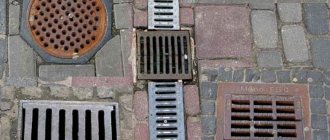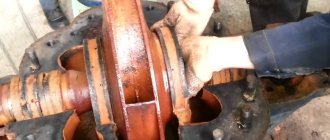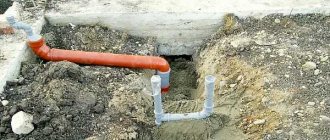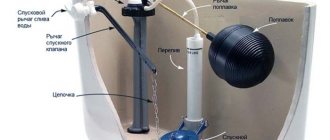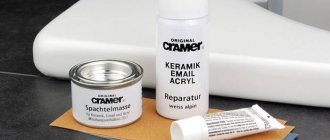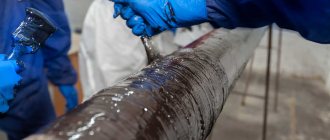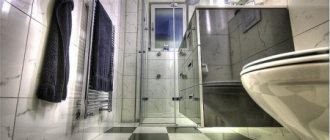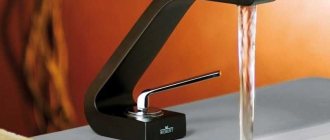What you need to repair plumbing
To repair small defects in the surface of a bathtub or shower stall, you should assess the extent of the damage, then it will be easier to understand which product will have to be used. So there are two main problems that may arise:
- Defects acquired due to mechanical influence are the fall of heavy or sharp products, exposure to fire, etc.;
- The use of chemical elements, if you choose aggressive substances for cleaning, the integrity of the acrylic layer may be damaged.
To repair small flaws in the surface of a bathtub or shower stall, you should assess the extent of the damage.
Features of repairing acrylic bathtubs
The most common types of damage to acrylic products are:
- mechanical, appearing when carelessly hitting the surface or burning it. The bathtub may crack as a result of heavy load on it;
- chemicals that arise due to the use of aggressive cleaning agents that leave streaks and stains.
If the defects are not serious, then the bathtub is simply repaired and not replaced with a new one. Before renovating the bathtub, you need to choose the right shade and coating material, otherwise the work will have to be done twice due to color mismatch.
Required materials and tools
To repair cracked acrylic bathtubs yourself, the first step is to prepare the material, as well as the tools that will be required for the process. Acrylic substance in liquid form, degreasing agents, cleaning agents. You will also need:
- Grinder/drill;
- Nozzle in the form of a whisk;
- Sandpaper of different grain sizes;
- Pliers;
- Rubber spatula;
- Sponge;
- Flashlight;
- Film coating.
To protect the master, prepare gloves and a respirator.
To repair cracked acrylic bathtubs yourself, the first step is to prepare the material, as well as the tools that will be required for the process.
A little about damage prevention
Of course, knowing how to repair enamel or deal with rust, you can be somewhat careless when it comes to covering a bowl.
Tips for maintaining acrylic surfaces:
- choose a mild cleaning agent without abrasives of any fraction;
- do not allow the bowl to come into contact with hard materials (basins, hammer);
- do not pour acid or acid-containing preparations into the font;
- do not scratch the bowl with sharp objects (at the time of repair, it is better to cover the surface with a soft cloth or bubble wrap);
- do not use chlorine or other bleaches;
- do not jump (even a baby can damage the bottom);
- choose a product with walls that have an acceptable thickness threshold.
This last point especially applies to acrylic bowls. The fact is that many manufacturers allow thinning of the walls, casting fonts of exquisite shapes. Therefore, it is extremely important to choose a bowl “for light”. If you turn the font opposite a bright light source, it should be uniformly smooth, without any translucent areas. This means that the manufacturer did not skimp on the material; in the near future you will not face the threat of restoration of the coating, restoration of a chip on the wall or bottom.
In everyday life it is difficult to avoid minor troubles. We were refreshing the renovation and accidentally dripped paint onto the surface. Or your favorite cat did a fair amount of claw work while washing, which left deep scratches on the once smooth surface of the acrylic. A basin with laundry escaped from my hands and fell onto the side, causing the enamel to chip. No matter what material the bathtub is made of, it is not insured against damage. But is it possible to correct the mistake?
Removing scratches on acrylic and chips on enamel
Numerous companies offer expensive resurfacing services. They are ready to re-cover or install liners that transform an old bathtub into a new one. Meanwhile, it is quite possible to carry out repairs yourself, as well as independently restore the former luster to ceramic and enameled surfaces. This can be done by anyone who has ever used a can of paint and knows how to sand a surface. For example, the products of the German company Cramer, which allow you to make repairs yourself, enjoy a good reputation.
To remove major damage and chips on ceramic (porcelain) products, Cramer has released the Cramer Reparatur-Set repair kit, as well as the Cramer Star White barcode corrector. The first is two-component and is suitable for ceramics, enamel, acrylic, and powder-coated surfaces. The second is essentially a special one-component paint for plumbing, intended for filling small dents, scratches and defects in the coating of plumbing, ceramic tiles, radiators, sinks, and furniture. You can repair acrylic bathtubs at home or update your sink using these kits in just a couple of hours. And do not touch the repaired surface for another 4 days so that the applied solution acquires the necessary strength. In this case, you will need to perform five simple steps.
- Clean the surface, depending on the material from which it is made, either from rust or from broken fragments. Degrease.
- Mix the required amount of putty with hardener in a ratio of 30:1. The mass must be used within 4 minutes, otherwise it will harden and will be beyond repair.
- Apply the mixture to the chip or damaged area of the acrylic. When repairing porcelain or ceramics, you can use putty to glue down pieces of broken material. Allow the mixture to harden for 30 minutes.
- Sand the surfaces: for enameled and porcelain products, use the brown sandpaper included in the repair kit; for acrylic and fiberglass products, use gray sandpaper, which is intended for wet sanding, that is, using water. When the surface to be repaired is completely smooth, clean it from dust.
- Apply aerosol finishing coat to the repair area. There should be enough layers to completely hide the place where the putty mixture was applied. This process completes the repair of cracks and chips on acrylic bathtubs and repairs damage to enamel, ceramic or porcelain surfaces
Everything you need (tubes of putty and hardener, an aerosol with a finishing coat, two sheets of sandpaper for ceramics or brown enamel and one gray for acrylic, and even a spatula) is included in the repair kit.
BY THE WAY.
All components of the kit must be handled with care. It must be stored in a place out of the reach of children. When spraying the composition from a can, protect your eyes and try not to get it on your skin. It is best to use gloves when working.
Eliminating stains on enamel
What should you do if you accidentally drop paint or glue on an enamel product? How to clean metal deposits on a sink without damaging the surface? Believe it or not, an eraser will help. Not a simple one, of course, but a plumbing one. It even removes stains that cannot be removed with traditional cleaning products without damaging the surface or changing its color. Moreover, the Cramer Wannen Gummi universal plumbing eraser contains no acids at all. And they use it in the same way as the most common one, which erases pencil notes from paper. Only in the case of paper, it is undesirable to use water (everyone knows how this ends), but for a plumbing eraser, the help of water increases the cleaning efficiency.
BY THE WAY.
The eraser cannot be used on acrylic and fiberglass surfaces.
We revive acrylic products
Not all plumbing products can be cleaned with the usual means: abrasive or aggressive. Instead of putting things in order, they can cause irreparable harm. We are talking, in particular, about acrylic. We have already written about what should not be used to wash acrylic surfaces. German manufacturers offer a product that not only effectively cleans, but also removes stains, minor scratches, limescale deposits, and restores color while polishing the acrylic surface. This is Cramer Acryl Star cleaning and polishing paste. It combines specially selected cleaning and polishing components.
Using the paste, you can not only restore the whiteness of an acrylic bathtub or tray, but also sand out deep scratches. For these purposes, the Cramer Acryl Star set includes sanding paper with a grit of 1200 and 2500 granules.
Remove scratches from acrylic in this way:
- Remove damage from the wet surface by moving 1200 grit sandpaper in a straight motion along the scratch, then change the sanding direction by 90°.
- Continue wet sanding with 2500 grit paper until the surface is smooth and matte.
- Apply Acryl-Star to the cleaned surface and buff it with a soft, damp cotton cloth for 3-5 minutes until the desired shine is achieved.
BY THE WAY.
If you polish correctly, the surface of the acrylic in the place of the scratch can be brought to a mirror shine, so that even memories of the damage will not remain.
We achieve ideal cleanliness of faucets and cast marble products
In addition to acrylic, cast marble products (sinks, trays) require special care. Special means are provided for them. For example, a cleaning and care paste is intended for high-quality surfaces made of mineral casting (cast marble, quarry, polyethylene). Mineral-Star paste components specially selected for cleaning and maintenance remove lime, dirt, and other deposits without leaving scratches. Due to the high concentration of the drug, for one cleaning of products made from mineral raw materials, very little paste is required - literally the size of a hazelnut, so one tube will last for a long time. In addition, it is absolutely harmless, since it does not contain acid, so you do not have to worry about irritation on your hands. But this cleaning paste is not suitable for surfaces with Easy to Clean dirt-repellent coating, since in addition to cleansing it also has a polishing effect.
Another problem during cleaning is ruining one item while cleaning another. For example, fittings cleaning products usually contain strong acids, which are necessary to remove lime deposits. And they, in turn, negatively affect the enameled surface. As a result, the taps begin to shine, and the shower tray and bathtub gradually lose their shine. German manufacturers have a 100 ml Cramer Chrom Star cleaning and polishing paste for this case. It restores color, removes heavy dirt and traces of corrosion from matte and shiny chrome surfaces, and also brings old fittings to a shine. Its composition is harmless to enamel and ceramics.
BY THE WAY.
There are no problems in using the drugs. You just need to rub a small amount of paste the size of a hazelnut on a wet surface with a damp sponge, rinse with warm water and wipe dry. In the case of Cramer Chrom Star, you can also polish the cleaned surface using a regular damp cotton cloth.
Today, Cramer offers perhaps the widest range of products for repairing, cleaning and polishing plumbing fixtures. If you want to buy a kit for repairing acrylic bathtubs, as well as cleaning and polishing products for plumbing products, then you can get acquainted with them in more detail and order.
The video shows how to use the presented tools:
Means for sealing cracks, potholes and chips
You can renovate a bathroom using different means. The choice of substance also depends on the nature of the damage, whether the coating is cracked, whether a gap or hole has appeared, etc. For chips and cracks, car putty is suitable. If there are only small flaws on the surface, then you can quickly eliminate them with the help of enamel, which is applied with a brush to the defective areas.
The surface can be filled, this helps to completely renew the coating. There is a product on sale called Stakryl, which creates a new thick layer that covers all defects in the base.
Stakryl creates a new thick layer that covers all base defects.
Options for restoration work
Restoring acrylic is possible in three ways:
- apply two-component enamel;
- use liquid acrylic, a method called “pouring”;
- use of acrylic liner.
You need to start restoring an acrylic bathtub with your own hands with preparatory work. Incorrectly performed procedures for preparing the upper part of the bowl will ruin all restoration work. After a short time, the surface of the acrylic will become cracked again, the shine of the top layer of the sink will fade, and you will need to glue the hole on the surface. The question arises: how to restore an acrylic bathtub.
Restoration with liquid acrylic: the pros and cons of the method
One of the main advantages is the long service life of the bathtub. After updating, it can be used for more than 10 years. Acrylic is evenly distributed over the surface of the cast iron product because it is poured rather than applied with a brush. The product fills microscopic cracks, leveling the surface.
Restoration enamel is harmless to health and does not emit a strong odor. It dries quickly, so work is completed in a short time. But this restoration method has a drawback. To start using the bath again, you will have to wait 2 days. It is best to keep the bathroom closed during this time. Otherwise, dust particles settled on the drying layer of acrylic will ruin the appearance of the bathtub.
Most owners prefer white bathtubs, but during the restoration process you can tint them by painting the bowl in any other color.
Using enamel for restoration
Acrylic products can be restored using enamel. This surface repair option will save money. In addition, the work is not difficult.
Enamel consists of substances with a very pungent and unpleasant odor. Therefore, for respiratory safety, you need to work in a respirator. Hands are protected with rubber gloves. The repair option in this way will help answer the question of how to repair an acrylic bathtub with holes in the surface.
Before application to the surface, the enamel is combined with a hardener, strictly following the recommendations in the instructions. Externally, the mixture will resemble paint.
Using a brush, apply the enamel in the following sequence: the first layer with horizontal strokes, after 15 minutes, without waiting for the applied layer to dry, vertical strokes as the second layer.
The enamel is especially carefully applied to the bottom, which bears the heaviest load, where you can most often see chips on an acrylic bathtub. A spray bottle can make the job easier. It is important to monitor and not miss a single centimeter of coverage. The restoration of the acrylic bathtub is completed.
The enamel will completely harden after a week. It is necessary to keep the area around the sink clean. Make sure that dust particles do not settle on the surface of the new coating.
A repair kit for acrylic bathtubs with two-component enamel is used when the question arises of how to glue an acrylic bathtub. In this way, the restoration of acrylic bathtubs eliminates large potholes and chips. A big problem will require applying several layers of material.
Using a restoration insert
The acrylic insert itself must be ordered at the factory, where it will be made in the required dimensions. The use of a liner will be relevant if the question arises of what to do when an acrylic bathtub is cracked. In this way, you can revive the product and answer how to remove the through hole.
The work requires full compliance with step-by-step instructions.
- Work begins with the preparatory steps described earlier.
- Place marks on the new bowl for drain and overflow. There is a simple method when the cup that is being restored is smeared with toothpaste and the liner is lowered into it. It must be pressed tightly and pulled out quickly. The drain and overflow holes will be visible on the back of the liner. They are drilled out.
- The surface of the old bowl is completely covered with sealant, construction foam, without missing a single centimeter, including the sides.
- Without wasting time, the liner is inserted inside and pressed with force against the old bowl to glue them together.
- In order for the liner to fit snugly on the bottom, you need to stand near the drain hole with clean feet and walk along the bottom along the entire length of the bathtub.
- Excess construction foam or adhesive is removed with a rag.
- The drain and overflow elements are put in place.
- To prevent the new bowl from deforming when the glue dries, you need to fill it with water for 24 hours and leave it. Later the water is poured out.
- The liner will extend the life of an acrylic bathtub by 10 years. Repair using a liner is the answer to how to repair a hole in an acrylic bathtub and how to remove large cracks.
How to repair a crack with your own hands
The crack may be small at first, but if repair is delayed for a long time, it will increase in size and will be more difficult to repair. You should purchase a special repair kit for an acrylic bathtub. The self-repair process consists of the following steps:
- They start by drilling out the crack at the edges so that it does not spread any further. This is done with a 5mm drill.
- Next, the size of the flaw is increased in order to fill it with a high-quality solution; a drill is also taken.
- Apply masking tape around the edges to protect the rest of the area from the effects of sandpaper. The damaged area is treated with sandpaper to make the surface rough.
- Wipe the areas with soap and water.
- Mix liquid acrylic and hardener, see the ratio on the packaging.
- The resulting composition is applied and leveling is done with a rubber spatula.
- The surface should dry for a day.
The shades of the bathtub may differ, it is important to choose the appropriate option; on the set it is written which shade is included - cold or warm type.
The shades of the bathtub may vary, it is important to choose the appropriate option.
Restoration kits - what's the difference?
Acrylic structures are made using different methods. Finished products differ in the thickness of the acrylic layer. The most expensive are bathtubs that are made using vacuum molding technology. The thickness of the acrylic layer of such structures exceeds 4 mm. Manufacturers take a sheet of material, heat it up strongly on special equipment, and then mold it according to a specific pattern in a vacuum atmosphere.
Vacuum formed acrylic bathtub
Cheaper are products on which acrylic is applied by casting or spraying onto a fiberglass base. The acrylic layer of such structures never exceeds 2 mm. Determining what kind of bathtub is in front of you is quite simple. Take a look at the cut edge of the product, you will see the thickness of the acrylic layer.
You need to inspect the bathtub not for the sake of empty interest, but in order to understand what kind of repair kit you need to purchase to restore it. Kits for low-cost construction typically consist of epoxy resin mixed with a small amount of special additives. But the restoration of bathtubs with a thick coating should be carried out with a repair kit made from a special type of hardener and liquid acrylic.
Surface preparation
The preparatory stage is required when the defect is already old and operating conditions have caused the problem to worsen. If you decide to fix the chip right away, the process will be shorter, without preparation. But, if the crack is old, then carry out the steps described below:
- Remove the rust layer using a knife, needle or screwdriver. You can use a special solution.
- Wash the surface so that no dirt remains, use detergents without abrasive elements.
- Get a clean base, then dry it with a hairdryer.
- Use acetone to degrease the base, then dry it with a hairdryer.
The preparatory stage is required when the defect is already old and operating conditions have caused the problem to worsen.
Repairing shallow scratches and minor burns
If the bathtub is not handled carefully during its intended use, then minor damage may appear on its surface in the form of shallow scratches or burns from household chemicals. Moreover, if the defect is superficial, then repairing it yourself will take place without any problems if you follow the following rules:
- Surface damage is cleaned with sandpaper using coarse-grained material in the first stage and a finer equivalent in the finishing stage.
- Due to the fact that acrylic has a homogeneous structure, due to such grinding there will be no changes in the shade of the surface. After completing the sanding procedure, acrylic polish is applied to the surface of the bathtub.
In the case of a deep burn, simple grinding is not enough to eliminate it. In such a situation, the formed depression is filled with liquid acrylic, after which it hardens, sanding is carried out using sandpaper.
Types of possible damage
Before you seal a plastic bathtub or cover up a defect in acrylic, you should understand what caused the damage. There are not many reasons for such flaws:
- Mechanical loads on the surface can lead to chips; if an object falls on the base, or the coating is forcefully touched with the sharp side of the tool, it is damaged;
- Acrylic is not resistant to chemical elements, strong substances can damage the base, do not use products with chlorine and oxalic acid.
Before you seal a plastic bathtub or cover up a defect in acrylic, you should understand what caused the damage.
Through holes
If something heavy is dropped onto the surface of a cast iron or steel bathtub, only the surface enamel will have to be repaired. In the case of a material such as acrylic, it will not be easy to repair a chip, but a whole hole.
Work progress:
- At the two ends of the hole, make indentations with a small diameter of two to three millimeters.
- Carefully clean the hole with fine-grained sandpaper and then degrease with alcohol.
- The repair kit contains valuable instructions according to which you need to prepare a mixture with a hardener.
- Apply one layer of the resulting resin to the damaged area.
- Take the reinforcing material and press it into the resin onto the surface of the hole.
- Apply the next layer of mixture so that it covers the reinforcing material.
- Now leave the bath until the resin is completely dry. The time is indicated in your instructions.
- After drying, the damaged area should be repaired with medium-grain sandpaper, then with fine-grain sandpaper.
- Treat the resulting surface with alcohol again.
- Apply the special polish included in the repair kit to the new sanded area.
- Then use a flannel to polish the surface of the tub.
There are no holes, the surface is smooth and shiny: your bathroom is like new!
Repair of minor defects
Minor defects can be quickly and easily eliminated by expanding the size of the crack, degreasing the area, preparing paint and applying it to the damaged area. Cover the top with masking tape, leave it on for 5-6 hours, then remove the tape. Treat with alcohol and polish. The seal is completed with a coating of polish.
The seal is completed with a coating of polish.
Restoration of cracks - follow technology
It is recommended to repair these types of damage immediately after they are discovered. If the cracks become larger and deeper, it will be very difficult to deal with them. Sometimes it's almost impossible. Restoration of a bathtub with cracks is carried out using repair tape or a repair kit (do not forget that it must be selected taking into account the thickness of the acrylic layer). Restoring the integrity of the structure through the use of special kits occurs as follows:
- Using sandpaper marked 400, sand the area of the bathtub near the crack.
- Using an electric drill, drill holes with a cross-section of 1 mm on each side of the damage (in this case, the crack will not expand).
- Clean the surface from crumbs and small debris, wash it with soapy water, and wait for the bath to dry.
- Mix the components included in the repair kit.
- Using an applicator (manufacturers of the composition include it in the restoration kit), apply the prepared mixture to the hole and crack.
- You wait 10–12 hours.
- Sand the repaired area of the bathtub until the surface is completely smooth.
Repair kit for acrylic structure
When using repair tape, the operation algorithm is slightly different:
- Make holes and clean the surface.
- Cut a piece of tape (it should cover the crack 10 mm in each direction).
- Use the sticky side to glue the tape to the surface. Air bubbles may form under the tape and must be removed immediately.
After this, wait for 3–5 hours for the restored area to dry. Under no circumstances should you add water to the bathtub while drying!
Acrylic peels off, what to do
If peeling of the coating occurs, such areas should be glued together using glue for polymer bases. A hole is made in these areas, then the adhesive is poured into it. After drying, the process of sealing the cracks, which was described above, is carried out.
If peeling of the coating occurs, such areas should be glued together using glue for polymer bases.
What to do with through holes
The most unpleasant moment that owners of acrylic bathtubs may experience is the appearance of through holes and cracks; here a special insert will be needed. The problem is really serious, but completely solvable. Therefore, if you have a question about how to repair a crack in an acrylic bathtub, then the following information is just for you.
Through hole in an acrylic bathtub
To carry out the procedure you will need: a drill with a diameter of 1 - 1.5 mm, coarse sandpaper, alcohol, fiberglass cloth, plastic film, tape, sandpaper with a grit of 2000, epoxy glue, liquid acrylic.
The work begins with carefully drilling out the edges of the crack. After this, the edges of the defect are processed using coarse sandpaper, this is done at a distance of 3 cm from the edge of the crack. The treatment must be performed both on the inner surface of the bath and on the outer surface. The working area must be degreased with alcohol, and the edges of the hole must be cleaned of remnants of the reinforced layer.
A fiberglass fabric insert is attached to the outer surface using epoxy adhesive. When the glue has completely polymerized, the procedure must be repeated two more times. Each layer overlaps each other by 3 cm. After the final layer has dried, liquid acrylic is applied to the inner surface.
To seal the work area, use polyethylene film, and its edges are secured with tape. To polish the inner surface you need to use sandpaper. After completion of the repair work, the fiberglass insert will reliably protect the surface of the acrylic bathtub from leaks and deformation.
Repair of serious defects
Damage that leads to a leak in the bathtub and water constantly appears in the room after taking a shower is considered serious. To fix the problem you need fiberglass. Proceed as follows:
- The edges are cleaned with a knife.
- The problem area is sanded with sandpaper.
- Treat with an alcohol solution.
- Epoxy resin is applied.
- Wait for the layer to harden.
- Treat the area again with sandpaper.
- The smooth coating is wiped with alcohol.
- Polish is applied.
Damage that leads to a leak in the bathtub and water constantly appears in the room after taking a shower is considered serious.
Restore shine
Long-term use of an acrylic bathtub leads to gradual abrasion of its surface. Because of this, the bowl loses its original shine and becomes dull. In such circumstances, a wax composition can be used to eliminate the defect.
In addition to this method, special pencils are used to restore shine and eliminate minor scratches in the bathroom. Their composition includes polishing particles, which soften it upon contact with acrylic. This effect causes the polymer to spread, fill the problem area and eliminate the defect.
It is recommended to use the acrylic bathtub pencil immediately after scratches occur. It does not wash off with water.
How to prevent breakdown
To avoid the need to carry out the repair work described above, you should evaluate the condition of the bathtub, both external and internal, in advance. Details that prevent an emerging defect:
- Creaking indicates improper installation of plumbing fixtures or thinness of the coating;
- If there are deflections in the base, then you can place reliable materials under it, for example, bricks, to hide such an addition, cover the area with a plastic screen;
- In the light you will notice gaps, which indicates the unreliability of the coating, then use latex paint and strengthen the base using the pouring method.
In the light you will notice gaps, which indicates the unreliability of the coating, then use latex paint and strengthen the base using the pouring method.
It is possible to repair an acrylic bathtub at home. The process is not very complicated, the main thing is to prepare the surface and tools. It’s better to strengthen the coating in advance, which has become unreliable.
What to do if the coating has peeled off?
Often, when buying a cheap product, after some time the acrylic delaminates and swells. What can contribute to this:
- Installation errors. The bathtub shakes, the walls are deformed, which leads to peeling of the coating.
- Poor quality material.
In order not to encounter such problems, read our special articles: How to choose a high-quality acrylic bathtub? And how to install it correctly?
What to do if the acrylic is still swollen, how to glue it?
It is necessary to glue it back using a special adhesive for polymer products. If the “bubble” is not cracked, you need to pierce it with a syringe with a thick needle and inject glue into it.
If there is a crack, slightly bend the peeled layer and use a syringe to evenly distribute the composition so that the entire delamination is glued.
Further actions are the same as for restoration of cracks.
There is a more radical and high-quality, but less accurate approach. You need to cut off all the swollen acrylic and instead fill this place with the liquid composition from the repair kit. Performing the same procedures as when eliminating a breakdown ( STEP 5 and STEP 6 of the previous chapter). In this case, the integrity of the coating will definitely be restored, but such a patch will immediately catch the eye. Which method to use is up to you.
Restoration using enamel
There are many methods for dealing with defects on an acrylic surface. If scratches appear in the bathroom, enamel paint can help remove such damage.
It is applied exclusively to a degreased surface. To do this, you need to wipe the problem area:
- sandpaper;
- alcohol (solvent).
Before applying the composition to the acrylic bath, shake it well. The enamel should be applied in a thin layer. The paint dries completely within 24 hours. At this time, you cannot fill the bowl with water.
In addition to enamel paint, you can use special aerosols to remove defects on an acrylic surface. They are applied to areas that have been previously cleaned first with laundry soap and then with acetone.
Grouting tiles
Defects in the bathroom are formed not only on the surface of acrylic. Scratches often appear on tiles. She, like acrylic, does not tolerate mechanical stress well.
It is not possible to answer the question about scratches on tiles and how to remove them. Unlike acrylic, it cannot be completely restored, regardless of the size of the defect. There are two ways to return the wall to its original appearance:
- replace damaged tiles with new ones;
- erase the defect.
The first option is less practical, as it requires complex work, during which you have to remove several tiles from the wall.
The second method involves treating the damaged area with mastic or a special pencil. The material must dry completely, after which it is sanded.
It is relatively easy to remove defects from an acrylic bathtub. Most minor damage can be repaired and does not require professional intervention.
Recommended Posts
How to remove marks from a felt-tip pen, marker, pencil, plasticine...
Wood antiseptic: which one is better to choose
Sliding wardrobe: internal contents + photo
How to correctly write an application for roof repair
How to fight fungus
Golden ratio in construction

